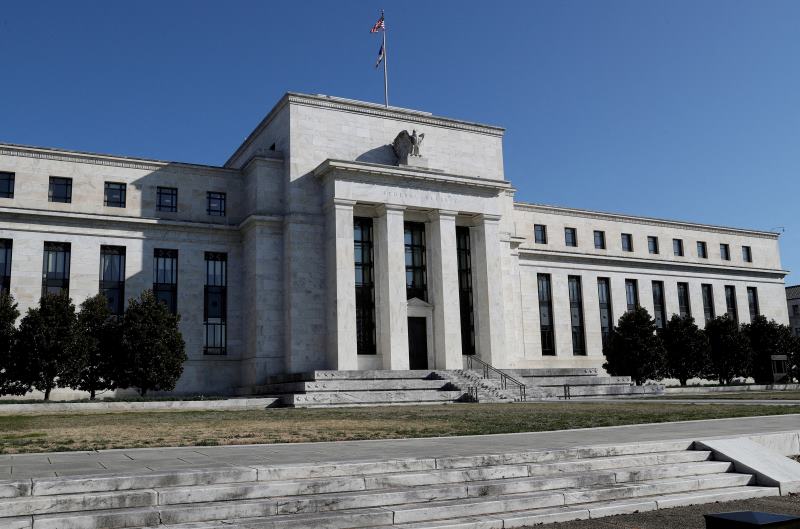Economy
Federal Reserve Urged to Enhance Emergency Lending Facility for US Banks
The Federal Reserve must intensify its efforts to address obstacles preventing US banks from utilizing a crucial emergency lending facility. This sentiment was echoed by current and former central bankers and experts at a Federal Reserve Bank of Atlanta conference on Monday.
Stigma and Operational Challenges
“The discount window is a highly stigmatized financial stability tool,” remarked Susan McLaughlin, a 30-year veteran of the New York Fed, during a panel discussion. McLaughlin, who supervised the facility’s operations during the financial crisis, acknowledged that while the central bank is working to improve the backstop, “I think we can go further.”
Fed policymakers and regulators aim for banks to regularly use the discount window to ensure quick responses to financial shocks, such as a run on deposits. However, banks have been hesitant to use the facility, fearing it would be seen as a sign of weakness or desperation. Many in the industry also view its operations as cumbersome and outdated.
Urgency After Bank Collapses
Last year’s collapse of Silicon Valley Bank and regional lenders heightened the need to reform the facility. Regulators noticed the rapid deposit withdrawals and SVB’s and others’ lack of preparedness. They chose Federal Home Loan Banks for borrowing instead of accessing the discount window, potentially increasing funding costs. This situation underscores the urgency for reform.
The collapse of SVB and regional lenders emphasizes the urgency for reform in banking infrastructure, according to Barron’s Subscription.
Regulatory Considerations
During his keynote at the Atlanta Fed conference, Michael Barr, the Fed’s vice chair, discussed potential regulatory alterations. These may involve mandating larger banks to uphold a minimum liquidity level at the discount window. Requirements might necessitate reserves and pre-positioned collateral based on a percentage of uninsured deposits. Regulators aim to enhance institutions’ readiness to utilize the discount window. Barr emphasized the importance of aligning regulations with the evolving financial landscape.
Technological and Stigma Issues
Fed Chair Jerome Powell mentioned in March that the central bank has “a lot of work to do” to promote the use of the discount window, including technological enhancements and addressing the stigma issue.
Regulatory Complications
Bill Nelson, Bank Policy Institute’s research chief, highlighted that bank treasurers find regulatory guidance complicating. “Banks are warned against tapping the discount window,” Nelson, a former Fed economist, explained. He doubts the effectiveness of encouraging banks to use it when regulations hinder access.
Challenges with Internal Liquidity Tests
Bank examiners informed treasurers they can’t use the Fed’s discount window or Standing Repo Facility for stress tests. SVB, not a regular repo market user, considered joining the facility. However, it lost interest when it couldn’t count it for stress-testing. Nelson mentioned SVB’s interest and subsequent disinterest in the repo facility. SVB’s decision highlights challenges with liquidity stress-testing requirements.
Need for a New Framework
McLaughlin emphasized banks’ reliance on the Federal Reserve during crises but lamented the stigma hindering prompt action. This delay compromises crisis management effectiveness. She proposed a revamped liquidity framework with distinct tools for varying needs, akin to other nations’ practices. This approach would ensure smoother coordination between central banks and regulators.
Proposals for Improvement
Banks, though not obligated now, might have to join the discount window as part of chartering, suggested McLaughlin. Automating collateral checks could accompany this requirement. Luc Laeven of the ECB stressed the necessity for banks to secure access in ordinary circumstances. They must understand regulations, arrange collateral, and practice borrowing processes beforehand. Preparing ensures efficient utilization of the discount window during crises.
Preparedness is Key
“The lender of last resort should not be like your house keys, put away mindlessly, unable to find in case of need,” he said. “That’s not convenient when there’s a fire.”
Get a 2-year subscription for The New York Times and The Economist, granting limitless access to daily updates, NYT Cooking, NYT Mini Crossword, The Economist ePaper, and insightful financial analysis from economists Paul Krugman and Joseph Stiglitz.

